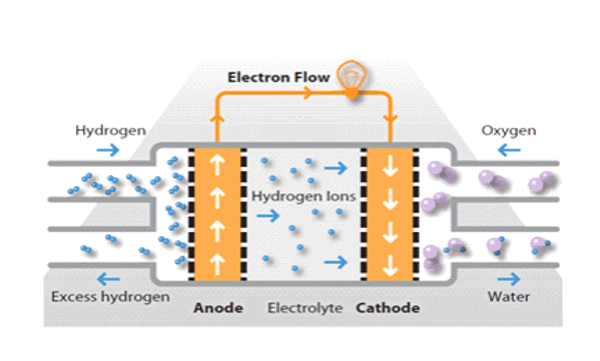Hydrogen – The next Energy Source for Transportation?
Hydrogen is the most abundant element in the universe, it is found on the sun and most stars and planets. Jupiter, for example, is mostly comprised of hydrogen. Hydrogen has a density of 0.000082 g/cm3 (water is 1g/cm3 at 40C) and thus readily escapes Earth’s gravity. On earth it is largely present in water.
Hydrogen is used in the chemical industry, mainly to make ammonia (NH3), which in turn is used to make fertiliser. It is also used to make cyclohexane (C6H12) and methanol (CH3OH) which are used to make plastics. Another large use is the hydrogenation of oils to produce fats such as margarine.
A growing use is as transport fuel and many major car manufacturers produce hydrogen fuel cell vehicles. The advantages are that the range and power is comparable to internal combustion engines, but the only emission is water. Fuel cells have no moving parts and are very reliable. The vehicle can be refuelled in less than 5 minutes, rather than an hour or more for an electric vehicle.
There are a variety of ways to manufacture hydrogen, most is produced by steam reforming of natural gas, which is the cheapest way to make hydrogen. The gas is heated along with steam, in the presence of a nickel catalyst. The end products are hydrogen and carbon dioxide. There are several other methods used to produce hydrogen from hydrocarbons.
The Kvaener process, developed by the Norwegian company Kvaerner in the 1980’s, produces hydrogen and carbon black by plasma reformation of liquid hydrocarbons. An Australian company, Hazer Group Limited (ASX:HZR), has developed a process that produces hydrogen and graphite from natural gas in the presence of an iron ore catalyst. This is a very interesting process and I shall review the company shortly.
Hydrogen can also be produced by the electrolysis of water, producing oxygen and hydrogen. But this is a very energy intensive process and is therefore the least common way for making hydrogen. However, if it could use energy from renewables cost effectively, it could become a viable production method.
In my opinion hydrogen is the future of non-polluting transport. A fuel cell vehicle has many advantages over electric vehicles and none of the disadvantages. For example, an electric car requires electricity typically produced by coal or gas, a significant portion of which is lost in transmission.
Hydrogen typically requires gas, and while producing carbon dioxide, it is less polluting than the equivalent amount of energy supplied to an electric car. Further, as mentioned, there are processes that can produce hydrogen without carbon dioxide as a waste product.
Early days, but a technology to watch.

